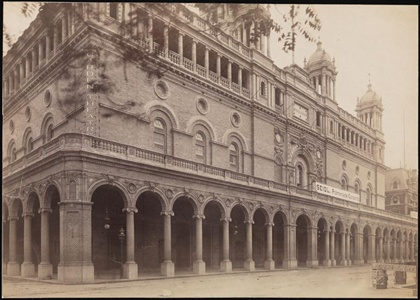This site uses cookies – Learn more.
History of Madison Square Garden
History of Madison Square Garden

Once known as the Madison Square Depot, Madison Square Garden’s legacy began adjacent to Madison Square Park, located at the northeast corner of 26th Street and Madison Avenue. The first (1876-1889) and second (1890-1925) Madison Square Gardens hosted a crazy quilt of diverse activities: there were dog shows, cattle displays, political conventions, circuses, theater, opera, balls, religious revivals, and boxing matches.
The first Madison Square Garden, owned by William K. Vanderbilt, was constantly abuzz with sporting events, as well as P. T. Barnum’s circus, which was brought to Madison Square Garden each year and is credited as keeping the financially inefficient building afloat. Unfortunately, the roofless and structurally unsound building was unable to host enough events to bring in necessary funds, leading to the building’s sale in 1887 and demolition in 1889.
The second Madison Square Garden, erected at the same location, had to be built in one year so as not to miss more than one season of shows. Working on a 24/7 schedule, one source reported that “at least one thousand men were at work at any given time” on the site (Berman, 73). Upon completion in 1890, the new Madison Square Garden was once again New York City’s epicenter of culture and large-scale events.
The expenses of operating Madison Square Garden again grew too steep, resulting in the Garden being sold in 1908 with The New York Life Insurance Company securing a mortgage for the building. Remaining open for several more years, the Garden closed on May 25, 1925. The third Madison Square Garden opened that same year at 49th Street and Eight Avenue.
The Garden on Madison Square Park was demolished in 1926, and over the course of the next two years, the New York Life Insurance Building was built – and still stands today, as the beautifully gothic building adorned with a golden roof that can still be seen from Madison Square Park.



